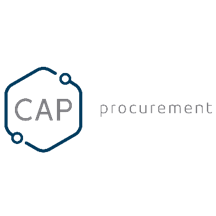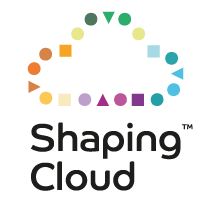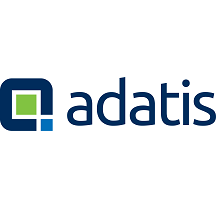Applications
|
 |
1QBit 1Qloud Optimization for Azure Quantum: The 1Qloud platform from 1QB Information Technologies enables researchers, data scientists, and developers to harness the power of advanced computing resources and novel algorithms without needing to manage complex and expensive infrastructure.
|
 |
8×8 Contact Center for Microsoft Teams: Fully integrated with Microsoft Teams, 8×8 Inc.’s Contact Center allows agents to connect and collaborate with experts to resolve customer issues faster. Features include performance metrics, activity history, speech analytics, and unlimited voice calling to 47 countries.
|
 |
Admix: Admix is a monetization platform for game publishers. Advertisements are integrated into gameplay, making them non-intrusive. Publishers can drag and drop billboards and TVs within their virtual reality, augmented reality, or mixed reality environments.
|
 |
AlmaLinux 8.3 RC: ProComputers.com provides this minimal image of AlmaLinux 8.3 RC with an auto-extending root file system and a cloud-init utilities package. AlmaLinux is an open-source, community-driven project and a 1:1 binary-compatible fork of Red Hat Enterprise Linux 8.
|
 |
Automate Repetitive Process with Just One Click: Built with Microsoft Power Automate Desktop tools, CSI Interfusion’s medical claim extraction solution allows users to pull employee medical claim history details from a webpage and download them into Excel with just one click.
|
 |
AUTOSCAN Mobile Warehouse Management: Enhance your enterprise resource planning system with this modern warehouse-scanning solution from CSS Computer-Systems-Support. Whether you’re scanning barcodes, QR codes, or RFID chips, AUTOSCAN automates numerous steps throughout your warehouse and shipping process chain.
|
 |
Barracuda CloudGen Access Proxy: Barracuda CloudGen Access establishes access control across users and devices without the performance pitfalls of a traditional VPN. It provides remote, conditional, and contextual access to resources, and it reduces over-privileged access and associated third-party risks.
|
 |
Barracuda Forensics and Incident Response: Barracuda Forensics and Incident Response protects against advanced email-borne threats, with automated incident response, threat-hunting tools, anomaly identification, and more. Administrators can send alerts to impacted users and remove malicious emails from their inboxes with a couple of clicks.
|
 |
BaseCap Data Quality Manager: BaseCap’s Data Quality Manager features intuitive data quality scoring so you can know where your organization’s data quality stands in terms of completeness, uniqueness, timeliness, accuracy, and consistency. Ensure your data is fit for your use cases.
|
 |
CAP2AM – Identity and Access Management: CAP2AM from Iteris Consultoria is an identity governance and administration solution that establishes an integrated task flow for corporate systems and resources. This enables organizations to synergize their governance, usability, integration, and auditing operations.
|
 |
CAP Procurement: CAP Procurement, an adaptable process management suite from Iteris Consultoria, is designed for procurement organizations. CAP Procurement’s no-code/low-code application platform fosters collaboration with business partners and suppliers through the streamlining of workflows.
|
 |
CentOS 7: This image from Atomized, formerly known as Frontline, provides CentOS 7 on a virtual machine with a minimal profile. CentOS is a Linux distribution compatible with its upstream source, Red Hat Enterprise Linux.
|
 |
CentOS 7 Latest: This preconfigured image from Cognosys provides a version of CentOS 7 that is automatically updated at launch. CentOS is a Linux distribution compatible with its upstream source, Red Hat Enterprise Linux.
|
 |
CentOS 7 Minimal: This preconfigured image from Cognosys provides a version of CentOS 7 that has been built with a minimal profile. It contains the minimal set of packages needed to install a working system on Microsoft Azure.
|
 |
CentOS 8: This image from Atomized, formerly known as Frontline, provides CentOS 8. CentOS 8 offers a secure, stable, and high-performance execution environment for developing cloud and enterprise applications.
|
 |
CentOS 8 Latest: This preconfigured image from Cognosys provides a version of CentOS 8 that is automatically updated at launch. CentOS is a Linux distribution compatible with its upstream source, Red Hat Enterprise Linux.
|
 |
CentOS 8 Minimal: This preconfigured image from Cognosys provides a version of CentOS 8 that has been built with a minimal profile. It contains the minimal set of packages needed to install a working system on Microsoft Azure.
|
 |
CHEQ Multi-channel Internal Communication Chatbot: CHEQ is an encrypted chat platform for internal communication with your employees. CHEQ works with Microsoft Teams and Viber and provides an easy way to send company announcements, documents, links, videos, and event invitations.
|
 |
Colligo Briefcase: Easily access Microsoft SharePoint on Windows devices online or offline with Colligo Briefcase, an add-in for SharePoint. It combines easy-to-use apps with central configuration and auditable metrics on user adoption.
|
 |
Customer Care Virtual Agent: The EY Customer Care Virtual Agent uses a pretrained Microsoft Language Understanding (LUIS) intent classifier to indicate actions a user wants to perform. A predeveloped dialog flow can be customized to meet the client-specific needs of your industry.
|
 |
Debian 9: This image from Atomized, formerly known as Frontline, provides Debian 9 on a virtual machine that’s built with a minimal profile. The image offers a stable, secure, and high-performance execution environment for all workloads.
|
 |
Debian 10: This image from Atomized, formerly known as Frontline, provides Debian 10 on a virtual machine that’s built with a minimal profile. The image offers a stable, secure, and high-performance execution environment for all workloads.
|
 |
Digital Finance: EY Global’s Digital Finance solution utilizes the Microsoft Dynamics 365 Finance module to streamline strategic financial processes and address customer value, user experiences, processes, technology, and operational impacts.
|
 |
Digital Fitness App: Upskill your employees with PwC’s Digital Fitness app. Employees take a 15-minute assessment, which provides insights into their baseline proficiency and defines customized learning paths. The app then provides bite-sized content for them to consume to enhance their digital acumen.
|
 |
DocMan – Document organization made easy: BCN Group’s DocMan, an intuitive document management solution that works with Microsoft products, allows users to easily upload documents, images, and videos and to tag content, making it easier to search, filter, and retrieve.
|
 |
Document Intelligence: The EY Document Intelligence platform uses machine learning, natural language processing, and computer vision to help companies review, process, and interpret documents more quickly and cost-effectively. Extract value and insights from your structured and unstructured business documents.
|
 |
Energy and Commodity Price Prediction System: CogniTensor’s Energy and Commodity Price Prediction is a combination of correlation analytics and prediction dashboards that recommend when to buy energy and other required commodities based on forecast market prices.
|
 |
enVista Enspire Order Management System (OMS): enVista’s Order Management System (OMS) for retail delivers enterprise inventory visibility, optimizes omnichannel order fulfillment, and empowers associates to improve customer service and satisfaction through personalized experiences.
|
 |
eSync Agent SDK: eSync from Excelfore is an embedded platform for providing over-the-air updates to multiple edge devices. Developed for automotive applications, eSync gives automakers a single server front end and allows data gathering from domain controllers, electronic control units, and smart sensors.
|
 |
EY Digital Enablement Energy Platform: EY Digital Enablement Energy Platform (DEEP) supports the upstream oil and gas value chain with a common data model. DEEP breaks down silos to integrate reservoir engineering with production planning, well operations with supply chain management, and land management with decommissioning.
|
 |
EY Nexus for Insurance: Built on Microsoft Azure and Microsoft Dynamics 365, EY Nexus for Insurance is a platform that enables carriers to launch new products and services, develop digital ecosystems, and automate processes across the value chain.
|
 |
Full Stack Camera: Full Stack Camera from Broadband Tower Inc. features video storage and AI analysis (face identification, transcription, multilingual translation), along with video recording and operations management. This app is available only in Japanese.
|
 |
Fuse Open Banking Solution: The EY Fuse Open Banking Solution from EY Global enables authorized deposit-taking institutions in Australia to comply with the Consumer Data Right legislation and manage data from consumers, regulators, and open-banking collaborators.
|
 |
Gate Pass Solution: CSI Interfusion’s Gate Pass, which uses the Microsoft Power Platform, digitizes pass access processes. Via mobile devices, logistics directors and supply chain managers can monitor access to facilities and analyze their delivery fleet’s efficiency.
|
 |
Guidewire on Azure – CloudConnect: Built on the Guidewire platform for property and casualty insurance, PwC’s CloudConnect is designed to help insurers grow new products and brands. CloudConnect offers a quick-start approach for preconfigured lines of business and full core processing for policy administration, billing, claims, and more.
|
 |
Hardened CentOS 7: This image from Atomized, formerly known as Frontline, provides CentOS 7 on a virtual machine that’s protected with more than 400 security controls and hardened according to configuration baselines prescribed by a CIS Benchmark.
|
 |
Hardened CentOS 8: This image from Atomized, formerly known as Frontline, provides CentOS 8 on a virtual machine that’s protected with more than 400 security controls and hardened according to configuration baselines prescribed by a CIS Benchmark.
|
 |
Hardened Debian 9: This image from Atomized, formerly known as Frontline, provides Debian 9 on a virtual machine that’s protected with more than 400 security controls and hardened according to configuration baselines prescribed by a CIS Benchmark.
|
 |
Hardened Debian 10: This image from Atomized, formerly known as Frontline, provides Debian 10 on a virtual machine that’s protected with more than 400 security controls and hardened according to configuration baselines prescribed by a CIS Benchmark.
|
 |
Hardened Red Hat 7: This image from Atomized, formerly known as Frontline, provides Red Hat 7 on a virtual machine that’s protected with more than 400 security controls and hardened according to configuration baselines prescribed by a CIS Benchmark.
|
 |
Hardened Red Hat 8: This image from Atomized, formerly known as Frontline, provides Red Hat 8 on a virtual machine that’s protected with more than 400 security controls and hardened according to configuration baselines prescribed by a CIS Benchmark.
|
 |
Hardened Ubuntu 16: This image from Atomized, formerly known as Frontline, provides Ubuntu 16 on a virtual machine that’s protected with more than 400 security controls and hardened according to configuration baselines prescribed by a CIS Benchmark.
|
 |
Hardened Ubuntu 18: This image from Atomized, formerly known as Frontline, provides Ubuntu 18 on a virtual machine that’s protected with more than 400 security controls and hardened according to configuration baselines prescribed by a CIS Benchmark.
|
 |
Hardened Ubuntu 20: This image from Atomized, formerly known as Frontline, provides Ubuntu 20 on a virtual machine that’s protected with more than 400 security controls and hardened according to configuration baselines prescribed by a CIS Benchmark.
|
 |
Harmonic VOS360 Live Streaming: Harmonic’s VOS360 transforms traditional video preparation and delivery into a SaaS offering, helping you quickly launch revenue-generating streaming services. Deliver content from anywhere in the world, with total geographic redundancy and operational resiliency.
|
 |
IPSUM Plan: IPSUM-Plan from Grupo Asesor en Informática manages and supports strategic and operational planning along with budgeting and risk assessment. IPSUM-Plan can be adapted to all types of public institutions and private companies. This app is available only in Spanish.
|
 |
IRM – Integrated Risk Management: KEISDATA’s Integrated Risk Management is a governance, risk, and compliance platform that offers real-time reporting and a performance-based enterprise risk management module. This app is available only in Italian.
|
 |
Joomla with Ubuntu 20.04 LTS: This preconfigured image from Cognosys provides Joomla with Ubuntu 20.04 LTS, MySQL Server 8.0.23, Apache 2.4.41, and PHP 7.4.3. Joomla is a content management system for building websites and powerful online applications.
|
 |
Kafkawize: Kafkawize, a self-service portal for Apache Kafka, simplifies Kafka management by assigning ownerships to topics, subscriptions, and schemas. Kafkawize requires both UI API and Cluster API applications to run.
|
 |
Kx kdb+ 4.0: kdb+ is a high-performance time-series columnar database designed for rapid analytics on large-scale datasets. kdb+ on Microsoft Azure allows you to efficiently run your time-series analytics workloads.
|
 |
Lynx MOSA.ic for Azure: Lynx MOSA.ic from Lynx Software Technologies acts as a bridge for wired and wireless networks used in industrial environments. With seamless connectivity, Lynx MOSA.ic enables analytics, AI, and update capabilities to be extended to manufacturing and logistics facilities.
|
 |
ManageEngine PAM360 20 admins, 50 keys: ManageEngine PAM360, a unified privileged access management solution, allows password administrators and privileged users to gain granular control over critical IT assets, such as passwords, SSH keys, and license keys.
|
 |
Medxnote bot: Designed for Microsoft Teams, Medxnote gives frontline healthcare workers, such as doctors and nurses, their own personal robotic assistant that connects them to any clinical data at the point of care. It also includes a secure, HIPAA-compliant healthcare messaging and communications platform.
|
 |
Migesa Cloud Voice: This solution allows your organization to connect and optimize its telecommunications infrastructure through the integration of leading information technology and communications platforms in the market. This app is available only in Spanish.
|
 |
officeatwork | Slide Chooser User Subscription: Kickstart your presentation with Slide Chooser by putting together a presentation based on the most up-to-date slides served to you directly in Microsoft PowerPoint on any device or platform. Simply drag and drop your curated slides into your slide libraries stored in Microsoft Teams or Microsoft SharePoint.
|
 |
Officevibe for Office 365: Officevibe gives employees a space to tell their managers anything, then empowers managers to respond and act. Weekly surveys, anonymous feedback, and smarter one-on-ones give team managers a full picture of their employees’ needs, strengths, and pains. Offer the support that will help your people thrive.
|
 |
Prefect: Prefect Cloud’s beautiful UI lets you keep an eye on the health of your infrastructure. Stream real-time state updates and logs, kick off new runs, and receive critical information exactly when you need it. Use Prefect Cloud’s GraphQL API to query your data any way you want. Join, filter, and sort to get the information you need.
|
 |
PRIME365 Cocai Retail: This solution from Var Group is a modern and scalable Var Prime application that can cover all phases of the sales process. It’s adaptable to all chain stores and interfaces with standard connectors to Microsoft Dynamics 365. This app is available only in Italian.
|
 |
PrivySign: One of Indonesia’s leading digital trusts, PrivySign provides you an easy and secure way to sign documents digitally. The digital signature is created by using asymmetric cryptography and public key infrastructure, ensuring each signature is linked to a unique and verified identity.
|
 |
Procurement Planning System: CogniTensor’s Procurement Planning System is a combination of correlation analytics and prediction dashboards that are specially designed to help you make data-driven decisions for choosing the best supplier based on past performance and forecast analysis.
|
 |
Proof of Value Automator for Microsoft Azure Sentinel: This platform from Satisnet configures Microsoft Azure Sentinel through a wizard so you can evaluate it in your business environment. Satisnet’s offer includes a cost modeler, support services, and a Microsoft 365-integrated email threat-hunting tool. |
 |
Pure Cloud Block Store (subscription): This is Pure’s state-of-the-art software-defined storage solution delivered natively in the cloud. It provides seamless data mobility across on-premises and cloud environments with a consistent experience, regardless of where your data lives – on-premises, cloud, hybrid cloud, or multiple clouds.
|
 |
Red Hat 7: This image from Atomized, formerly known as Frontline, provides Red Hat Enterprise Linux (RHEL) 7. RHEL is an open-source operating system that serves as a foundation for scaling applications and introducing new technologies.
|
 |
Red Hat 8: This image from Atomized, formerly known as Frontline, provides Red Hat Enterprise Linux (RHEL) 8. RHEL is an open-source operating system that serves as a foundation for scaling applications and introducing new technologies.
|
 |
Skribble Electronic Signature: Use Skribble to electronically sign documents in accordance with Swiss and European Union law. Skribble integrates with Microsoft OneDrive for Business and enables companies, departments, and teams to sign documents directly from OneDrive and Microsoft SharePoint Online.
|
 |
Smarsh Cloud Capture: This cloud-native solution captures electronic communications for regulatory compliance. With Smarsh, financial services organizations can utilize the entire suite of productivity and collaboration tools from Microsoft with a fully compliant, cloud-native capture solution.
|
 |
Smart Green Drivers: Say hello to reliable transport emissions data and goodbye to manual quarterly and annual greenhouse gas data collection. Empower all your drivers to discover the impact of their behavior with Smart Green Drivers. Get the ability to be carbon-neutral as you work toward net zero.
|
 |
Structured Data Manager (SDM): This solution enables the discovery, analysis, and classification of data and scanning for personal and sensitive data in any database accessible through JDBC. SDM automates application lifecycle management and structured data optimization by relocating inactive data and preserving data integrity.
|
 |
Tartabit IoT Bridge: The Tartabit IoT Bridge provides rapid integration between low-power wide area network devices and the Microsoft Azure ecosystem. The IoT Bridge supports connecting cellular devices via LightweightM2M and CoAP. Additionally, it supports numerous unlicensed wireless technology providers.
|
 |
TekAxiom Expense Management: Effectively manage technology expenses, accurately allocate costs, and automate payment management with TekAxiom. TekAxiom provides a cloud-based platform that delivers a customer-specific modular structure. It focuses on technology spend management, fixed and mobile telephony, and more.
|
 |
Tetrate Service Bridge: Tetrate Service Bridge is a comprehensive service mesh management platform for enterprises that need a unified and consistent way to secure and manage services and traditional workloads across complex, heterogeneous deployment environments. Get a complete view of all your applications with Tetrate Service Bridge.
|
 |
Timesheet System: This is a timesheet solution from CSI Interfusion for your Microsoft Office 365 environment. The solution aims to provide quick approvals, insightful reports, integration with upstream or downstream systems, and self-service that can maximize process efficiency.
|
 |
Ubuntu 16: This image from Atomized, formerly known as Frontline, provides Ubuntu 16. Ubuntu 16 offers a secure, stable, and high-performance execution environment for developing cloud and enterprise applications.
|
 |
Ubuntu 18: This image from Atomized, formerly known as Frontline, provides Ubuntu 18. Ubuntu 18 offers a secure, stable, and high-performance execution environment for developing cloud and enterprise applications.
|
 |
Ubuntu 18.04 LTS Minimal: This preconfigured image from Cognosys provides a Minimal version of Ubuntu 18.04 LTS. The unminimize command will install the standard Ubuntu Server packages if you want to convert a Minimal instance to a standard environment for interactive use.
|
 |
Ubuntu 20: This image from Atomized, formerly known as Frontline, provides Ubuntu 20. Ubuntu 20 offers a secure, stable, and high-performance execution environment for developing cloud and enterprise applications.
|
 |
Vigilo Ondehub: Get a management information system with tools to efficiently manage daily life in education. Vigilo will deploy a highly scalable open platform for school data management. It ensures interoperability and security, introduces artificial intelligence, breaks vendor lock-in, and opens for services from suppliers.
|
 |
Virsae Service Management for UC & Contact Center: Virsae’s cloud-based analytics and diagnostics for unified communications (UC) and contact center platforms put you in the picture to keep UC running at peak performance. Go beyond simple monitoring with proactive fixes and system foresight to resolve up to 90 percent of issues.
|
 |
Zammo AI SaaS: This user-friendly platform gets your business on voice platforms and allows you to easily extend your content to interactive voice response and telephone-based voice bots, as well as chatbots across many popular channels: from web and mobile to Microsoft Teams.
|
Consulting services
|
 |
Adatis AI Proof of Concept: 2-Week Proof of Concept: Get an insight into the potential of AI for your organization so you can begin your journey and realize benefits in the short term. This offer from Adatis will include a findings report with a summary of next steps, including estimates of time and cost.
|
 |
AI System Infrastructure: Information Services International-Dentsu Co. Ltd. will customize its AI consulting service to your company’s purpose, data, and situation, then deliver a proof of concept of an AI system. This offer is available only in Japanese. |
 |
Azure Migration – Ignite and Engage: 1-Hour Briefing: Kickstart your migration journey to Microsoft Azure. In this session, Cybercom will run you through its proven migration practice that is designed to empower you with a smooth and efficient transition and transformation to the Azure cloud.
|
 |
Azure Migration: 10-Week Implementation: Computacenter will provide end-to-end support on your journey to Microsoft Azure. Fully aligned to the Microsoft Cloud Adoption Framework, Computacenter offers services that assist your organization in defining the strategy, creating the plan, ensuring readiness, and more.
|
 |
Azure Sentinel Workshop – 1 Day: Get an overview of Microsoft Azure Sentinel along with insights on active threats to your Microsoft 365 cloud and on-premises environments with this workshop from DynTek. Understand how to mitigate those threats using Microsoft 365 and Azure security products.
|
 |
Azure Site Recovery: 2-Week Assessment: Before you start protecting VMware virtual machines using Microsoft Azure Site Recovery, get a concrete and complete picture of the expected costs with this offering from IT1. Then employ a business continuity and disaster recovery strategy that ensures your data is secure. |
 |
Azure Support – CSP: Tenertech offers a fully managed service for your mission-critical Microsoft Azure environment. Its service provides easy Azure access control via Azure Lighthouse for CSP customers. Get enterprise security via Azure Sentinel as well as management and incident response.
|
 |
CAI Enterprise DevOps: 6-Week Implementation: Conclusion will help you implement and realize DevOps as a Service. Switch to a sustainable way of working, based on a safe framework that uses an effective and efficient CI/CD approach. Create room for your business to innovate and respond better to the market and to customers.
|
 |
Cloud Migration: Implementation: Shaping Cloud’s cloud migration strategy, planning, and delivery services are designed to support customers and deliver improvement benefits. This can be in an advisory or technical assurance capacity, or up to Shaping Cloud’s complete service.
|
 |
Cloud Readiness Assessment: 2-Week Assessment: Logicalis will conduct a thorough analysis of your technology landscape and capabilities to determine what workloads should be running in the cloud. Logicalis will determine the right strategy for Microsoft Azure implementation and workload migration.
|
 |
Customer Intelligence Retail: 10-Week Implementation: The Customer Intelligence Platform by ITC Infotech delivers contextual marketing and loyalty personalization with predictive modeling algorithms. Equip your marketers to perform the appropriate segmentation, persona creation, and product category analysis.
|
 |
Data Estate Modernization: 10-Week Assessment: ITC Infotech will deliver real-time and predictive insights across your enterprise with platforms of intelligence for a scalable, flexible, secure data foundation that is future-ready. These services can help enterprises reduce costs by 30 percent to 50 percent.
|
 |
Data Ingestion Service: 1-Hour Briefing: Adatis’ Microsoft Azure Data Ingestion framework as a service enables an easy and automated way to populate your Azure Data Lake from the myriad data sources in and around your business. This allows anyone you grant access the ability to connect and ingest data into your data lake.
|
 |
Digital Diversity Intelligence: 7-Week Implementation: Globeteam uses insight from human behavior, different facility sensors, and data sources to create business value. Its solution combines these sources with classic data sources, such as customer loyalty applications, to create business value and knowledge.
|
 |
Excel to Microsoft Access – Azure: 1-Hour Assessment: IT Impact’s team will evaluate your Microsoft Excel spreadsheets and recommend the best route to take based on your security and long-term goals. During this assessment, IT Impact will discuss how your data can be migrated to Microsoft Azure SQL.
|
 |
Globeteam Azure Migration: 3-Week Assessment: Globeteam will analyze your on-premises infrastructure for Microsoft Azure migration and get a complete view of your business case and readiness for migration to Azure. The migration assessment will be presented in a report with all the findings, economic overview, and more.
|
 |
Hybrid Integration Platform: 1-Hour Briefing: Hybrid Integration Platform: 1-Hour Briefing: QUIBIQ will assist your company in building a modern hybrid integration platform as the basis of your digital transformation. This offer includes a one-hour briefing on Microsoft Azure Integration Services with a specialist from QUIBIQ.
|
 |
Hybrid Integration Platform: 2-Hour Workshop: QUIBIQ will assist your company in building a modern hybrid integration platform as the basis of your digital transformation. This offer includes a two-hour workshop with a specialist from QUIBIQ to understand your specific integration challenges.
|
 |
Iono Analytics on Azure: 2-Hour Assessment: IONO is a business intelligence service that frees users from relying on outdated data and provides them with easy-to-follow interactive reports without buying expensive software licenses. End users can create dashboards, share, and analyze, and more.
|
 |
IoT Accelerator Proof of Concept: 2 Weeks: Proximus will act as your trusted advisor to help you implement an end-to-end proof of concept utilizing technologies such as Microsoft Azure IoT Hub, Azure IoT Edge, and Azure containers.
|
 |
LogiGuard: 3-Week Implementation: LogiGuard from Logicalis is a security solution and approach powered by Microsoft Azure, centrally managed by Azure Sentinel. Logicalis’ approach helps customers understand their security posture and adopt modern tools to help protect their environment.
|
 |
Managed Services for Azure: DXC Technology’s Managed Services for Microsoft Azure provides design, delivery, and daily operational support of compute, storage, and virtual network infrastructure in Azure. DXC will monitor and manage system software, infrastructure configurations and service consumption, and more.
|
 |
Manufacturing Intelligence:10-Week Implementation: ITC Infotech brings a bespoke AI/ML-powered intelligent platform to empower consumer packaged goods leaders to build stronger consumer connections, mutually rewarding retailer relationships, and streamlined supply chains. Define the roadmap of your platform.
|
 |
MLOps Framework: 8-Week MVP Implementation: Slalom has developed a comprehensive MLOps-enabled advanced analytics framework, equipped to accelerate any machine learning initiative. Slalom’s 6 Pillar Framework is built using state-of-the-art Microsoft Azure services, catering to the full spectrum of end users.
|
 |
NEC Professional Services: NEC Australia provides professional consultants with expertise across various technology streams, business areas, and industries. Among its engagements are single or multiperson contract assignments, retained assignments, and executive search.
|
 |
Pega Azure Cloud Service Automation: 8-Week Implementation: Set up a Pega-based CRM platform on Microsoft Azure with a two-stage process. Achieve greater scalability and a high-availability solution on Azure while gaining control over cost, time, and implementation uncertainties.
|
 |
Platform of Intelligence CPG: 10-Week Implementation: The Platform of Intelligence (PoI) offering from ITC Infotech will implement and deploy intelligence at scale to realize benefits in the consumer packaged goods industry. |
 |
Professional Services – Cloud Application Services: NEC Australia can provide expertise in cloud application services, whether that be bespoke development, continuous improvement, or modernization. NEC Australia also possesses the analysis and development expertise to move your legacy applications to the cloud. |
 |
Professional Services – Cloud Platform Services: NEC Australia’s Cloud Platform Services practice is a holistic offering that facilitates your cloud journey. The company’s certified consultants will start with an assessment of your infrastructure and guide you through architecture planning, service design, and more. |
 |
Professional Services – Data & AI: NEC Australia’s Data and AI practice offers a rapid delivery of data analytics, IoT, and artificial intelligence. NEC Australia developers will help you adopt and integrate emerging technologies within your existing systems, realizing value in the short term with rapid development cycles. |
 |
Professional Services – Modern Workplace: NEC Australia’s Modern Workplace practice focuses on user experience process automation and compliance by design. NEC Australia can implement intuitive, collaborative tools and supplement them with modern, cloud-first records and information management solutions. |
 |
PwC Data & Analytics: 4-Week Implementation: PwC can support you in rapidly deploying Microsoft Azure and developing products to demonstrate the value of data and analytics in the cloud. PwC’s five-step approach to piloting cloud technologies and creating value includes problem framing, data ingestions, and more. |
 |
Rackspace Government Cloud (Azure) 10-Week Assessment: This end-to-end service from Rackspace combines pretested UK OFFICIAL landing zone templates with a public services network-accredited operating environment and a U.K. sovereign operating model. Automation is used throughout to minimize the time and cost. |
 |
Rapid Azure Sentinel Deployment: 1-Hour Briefing: In this briefing, Adatis will work to understand your business cases, prove the value of Microsoft Azure Sentinel with a 31-day, no-cost trial, and deliver a roadmap on how to extend your Azure Sentinel implementation to reach your cybersecurity objectives. |
 |
SC: Azure Cloud Adoption Assessment (4 Weeks): This cloud assessment from Shaping Cloud will provide your organization with a clear a plan of action on how you can use Microsoft Azure cloud technologies to modernize and optimize your business. Get a cloud view of your current applications estate. |
 |
Security Managed IT Solution Managed Service: iV4’s service puts multiple defenses between corporate assets and hackers by establishing a modern perimeter of continuously managed security controls. The goal is to shorten the time it takes to detect and respond to malicious activity.
|
 |
Smart Data Platform Education: 5-Day Implementation: Make data work for your educational institution and its environment with the Smart Data Platform Education implementation, based on the Microsoft data platform. Macaw handles the availability, security, and further development of your data platform. This service is available only in Dutch.
|
 |
SQL Server Cloud Readiness Assessment: This cloud-readiness assessment from Seven Seas will help customers identify the on-premises SQL Server workloads that are compatible to be migrated to Microsoft Azure. Seven Seas will determine if PaaS, managed instance, or SQL Server virtual machines best suit your organization. |












Recent Comments